There are a few ways to understand voltage from a high level, and all of them are rather insightful. Taken together, I think you get a good idea of what's going on.
There are some assumptions we need to make unless we want to really dive into quantum field theory. Here are the assumptions:
- There exists a physical field called the electric field which can translate force between particles that interact with it. All particles that interact with the field interact with all other particles in the field, regardless of distance.
- The electric field exists in all points in space, even if it has a value of zero at that point in space.
- There are particles that interact with the electric field.
- Some particles are "positively charged" and release energy by moving from more positive to more negative values of the electric field. Some particles are "negatively charged" and do the opposite.
- Positively charged particles impart a positive value to the field around them. Negatively charged particles do the opposite.
With that said, we can address what voltage is. Taking a positive point charge for example, and assuming a present electric field with some gradient value (this could be achieved any number of ways e.g. with a smattering of other point charges, but isn't important for understanding), we say that the particle "releases energy" as it transmits from the higher valued point of the field to the lower valued point. This is the particle doing work, and is indeed how we draw energy from electricity.
Now, play that motion back again to where the particle was first located, and we know that we can release energy by allowing it to move from one end to the other. The term for this possible, but yet unreleased, energy is "potential energy". The difference between the potential energy of the first point and the second point (per Coulomb of charge) is the voltage difference. Make sure to note that the point charge located at the second point still has potential energy, it just has less.
Taken from a more mathematical perspective, the voltage difference between two points is the negative of the line integral of the electric field between two points in space. You can imaging moving a point charge between two points and using energy to do it. The negative of that energy is therefore the potential energy difference between those points i.e. the voltage.
One thing that is incredibly important to understand is that there is no such thing as "zero voltage". We can arbitrarily define some point in our system (usually ground) as zero voltage, and measure everything in respect to that, but that only applies to our system. So when we say something is at "five volts", what we mean is it is five volts above wherever we decided was zero volts in our system. We are fully capable of measuring voltage differences, but not absolute voltage.
